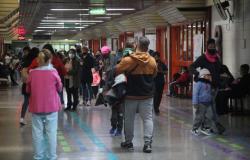Age, contributions and special regimes: what modifications could pensions undergo in Santa Fe
Last week the commission created to present a report for a pension reform in Santa Fewhich proposes modifications to clean up the deficit of the province’s Retirement Fund. Within 45 days they must submit the report to the executive, who will present the project to the Legislature.
Among the aspects that would be modified, one of them is the age necessary to retire. Nowadays men must have 65 yearswhile women 60; But there are special regimes such as those of the police or teachers in which retirement can occur before this age. This is explained in an article of the current law of the province that establishes compensation for lack of age for excess services on a 2×1 basis. That is to say, if a person has 40 years of contributions, he can use the 2×1 to retire five years earlier.
Age
“Dr. Diego Bernardini talks about ‘The new longevity’. There’s a increase in life expectancy, women are reaching 80 years of age, and men around 78 on average. For this reason, the pension and social security systems have to support for a long time people who retire at 65 and live 20 more years,” explained lawyer Enrique Gómez Cochia, a specialist in the matter.
The lawyer indicated that addressing this issue means “the possibility for people to remain active, that is, that his life not be canceled at 65 or 60 years old”. He also stressed the need for Equate age between men and women.
“It is very possible that the possibility of retiring at 65, like the man, will be analyzed. The issue of the province is delicate because It has many subsystems. The police, teachers, the judiciary, are different niches where things are different, so we will have to find a common point or a differentiation,” he said on LT10.
Contributions and special regimes
Among these different systems is that of the judicial power, whose average assets are around two million pesos. To active workers in this area “they would be asked for a higher contribution.”
“We have an equal contribution from all public employees, 14.5%. The judicial issue is that salaries They are not set by the province, they are set by the Nation, and what the province has is the down payment law. And the pension that you have to pay him has to do with this salary of a judge, so there is loss of provincial sovereignty”explained Gómez Cochia.
Experts indicate that a sustainable retirement system requires 4 active workers contributing for each retiree. However, this equation was broken in the province, and Currently there are 2.10 workers contributing for each retiree.
“There are 208,000 or so provincial employees and there are 99,000 retirees. That is to say, that proportion for a pure pay-as-you-go system – as the provincial one claims to be – is outdated. Therefore, is not sustainable over time”, the lawyer emphasized.
Another aspect that González Cochia emphasized was informality, focusing on people who work for the province but through a monotribute. Also, regarding the need for the retirees and pensioners themselves to have their representation within the commission, as well as the universities of the province.
READ MORE: Age, years of contributions and sector: how Santa Fe residents retire through the province’s pension regime






